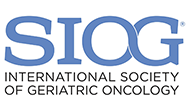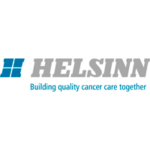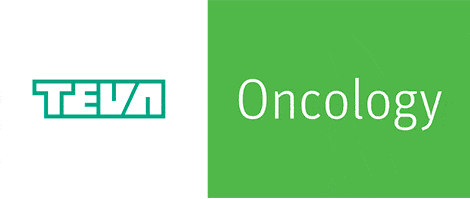Treating Acute Myelogenous Leukemia in patients aged 70 and above
Acute Myeloid Leukemia (AML) is a disease of older adults, with approximately one-third of newly diagnosed patients being ≥75 years of age. Chronologic age remains a major factor in both treatment decision-making and trial design with “older” frequently characterized as >60-65 years and a large proportion of patients over age 75 years excluded from trials and receiving no therapy for the disease based on registry data. While selected older adults can benefit from curative therapies, as a group they experience increased treatment-related morbidity, are more likely to relapse, and have decreased survival. Most studies have shown that Complete Remission (CR) rates, Relapse-Free Survival (RFS) and Overall Survival (OS) in older AML patients are much lower than their younger counterparts. The reason for these poor CR rates and survival includes a combination of patient-related factors and the underlying biology of AML. AML is a very different disease in older patients and the underlying biology is fairly aggressive. Older AML patients have a higher percentage of underlying myelodysplastic syndrome, poor-risk cytogenetics, increased expression of MDR1, and impaired apoptosis in vitro when exposed to cytarabine.
Autologous stem cell transplantation for multiple myeloma patients
The SIOG Task Force aims to review all available data on autologous stem cell transplantation for multiple myeloma patients and an expert position will be formulated.
Even though significant progress has been made in the standard of care for older cancer patients, with more and more therapies available that target specific kinds of tumors, the greatest successes have been limited to only a few types of cancers.
The recent clinical findings in autologous stem cell transplantation for multiple myeloma in the elderly indicate that chronological age is currently a barrier to the transplantation of hematopoietic stem cells in hematologic malignancies in older patients, and in particular multiple myeloma. Often, there are age cut-offs in this area. This needs to be discouraged and such cut-offs be reduced. The inclusion criteria need to be less strict and more rational because there are many older adults that are fit and less frail and who may benefit from these treatments.
Chronic Lymphocytic Leukaemia in Older Patients (CLL)
Chronic lymphocytic leukemia (CLL) mainly affects older people: the median age at diagnosis is above seventy years. Elderly patients with CLL are heterogeneous with regard both to the biology of their disease and aging. Following the diagnosis of CLL in an elderly individual, careful risk assessment is essential when treatment options are evaluated. This includes not only clinical staging and evaluation of disease-specific prognostic biomarkers such as 17p deletion and TP53 mutation, but also of comorbidities, physical capacity, nutritional status, cognitive capacity, ability to perform activities of daily living, and social support. Comorbidity scoring and geriatric assessment tools are helpful in achieving such multidimensional evaluation in a systematic manner. The introduction of new drugs including novel monoclonal antibodies and kinase inhibitors offers enhanced opportunities for the treatment of elderly patients with CLL.
The Treatment of Acute Promyelocytic Leukemia (APL) in Older Patients
Acute promyelocytic leukemia (APL) is a clinically and biologically unique subset of acute myeloid leukemia cases characterized by a translocation between chromosomes 15 and 17 leading to the fusion of the promyelocytic leukemia (PML) gene with the retinoic acid receptor α (RARα) gene, resulting in disruption of normal cell differentiation. While less common among older adults, there remain significant disparities in outcomes by age warranting attention to the management of older adults specifically. An optimal approach for older patients in regions of the world where ATO may be unavailable is also an important topic of consideration. In addition, the impact of treatment on health-related quality of life and functional independence warrants attention to optimize patient-centered care. Finally, aging-related issues which may impede timely work-up and management of this potentially treatable condition warrant attention in an effort to improve outcomes. Guidelines focused specifically on older adults with APL would address an unmet need and provide a tool for education to facilitate optimal therapy for this subset of AML patients with highly treatable disease.
Diffuse large B-cell lymphoma in the elderly
Non-Hodgkin’s lymphoma (NHL) is a common malignancy in both males and females. Of interest is that over the past two decades, the incidence of this disorder has been increasing across all adult age groups, rising by as much as 8-10% per year, and especially in patients >60 years of age. This increasing incidence is relevant in the elderly population; while patients age > 65 years represent 13% of the population, 53% of all new cases occur in this age group. The median age of patients at NHL diagnosis is 67 years. With the population >75 years and 85 years of age tripling and doubling, respectively, by 2030, the occurrence of NHL in this older patient population will pose an increasing problem. Diffuse large B-cell NHL (DLBCL) is one of the common subtypes of NHL diagnosed in the elderly population. Treatment of this disorder, which generally includes anthracycline-based combination chemotherapy, is complicated by comorbidities, as well as alterations in functional status, in the older population. Fortunately, in the past decade, the elderly population with DLBCL has been extensively studied in prospective clinical treatment trials, resulting in advances in the therapy of these patients.





